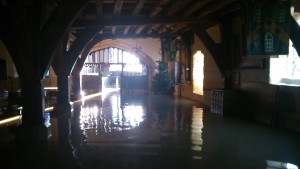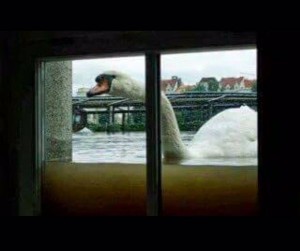The number of properties flooded during the recent floods, which did not have insurance cover, has yet to be revealed by the authorities.

- York Disaster fund
The number should be clear from the volume of applications for assistance made to the York Disaster Fund.
Grants are not normally made to those with appropriate insurance cover.
The level of grants made to date has also not been revealed by either the Council or the Two Riding Community Trust, who now run the fund.

- Appeal reaches £244,000
The Flood Appeal meanwhile seems to have stalled just short of its original target of £250,000. By 10th January £244,000 had been raised. However, the proceeds from several fund raising events, including a Barbican concert as well as the governments matched funding, have yet to be added to the total.
The number of uninsured properties is a matter of considerable interest as a new government underwritten guarantee scheme is due to come into effect in April.
 The company coordinating the new cover – “Flood Re” – will provide “affordable” insurance cover for homes in high risk locations. It was first suggested in 2011 but setting up delays – it was to have launched last summer – have piled pressure on its Chairman, former Tory MP Mark Hoban who apparently pockets a 6 figure sum for the part time role.
The company coordinating the new cover – “Flood Re” – will provide “affordable” insurance cover for homes in high risk locations. It was first suggested in 2011 but setting up delays – it was to have launched last summer – have piled pressure on its Chairman, former Tory MP Mark Hoban who apparently pockets a 6 figure sum for the part time role.
Flood Re is a collaboration between the insurance industry and the Government and will cap the insurance of home owners in flood-prone areas to £210 a year for Council Tax “Band A” homes to £540 a year for “Band G” homes. The scheme will cover 500,000 properties at risk of flooding, including top-end houses in council tax “Band H”.
The subsidy will be funded by a levy of “around” £10.50 on all household premiums across the country.
In the past, the scheme has been deemed “unworkable” and “needlessly expensive” by policy experts, because while it will include riverside mansions, it will exclude thousands of other, more modest properties, such as leasehold flats and homes that are let.
Shops and other businesses will not be covered by the scheme.
Properties built since 2009 will also remain exempt in order to discourage the development of properties on flood plains.
MPs musings
Meanwhile York’s MP has been holding a series of meetings with affected local flood victims. She is right to do so, although the formal inquiry set up by the Council is likely to look at how engaged and effective the Ward Councillors for the flooded Guildhall, Heworth and Clifton Wards – together with the MP herself – were on the ill-fated evening of the 26th December.
Residents will expect a professional report, on the outcome of her meetings, to be written and that it will be submitted to the official inquiry.
In the meantime It would be a mistake for any elected representative to indulge in public criticism of any agency or the work of volunteers until all the facts are known.
“Sound bite” interviews are not helpful.
Fire Brigade response

Rapid response type vehicle
The MP rightly praised the work of the Fire Brigade in York in a tweet on 27th December. Later questions emerged about the failure to utilise the local rescue craft available for the brigade while importing rescue boats from hundreds of miles away.
Now questions are being asked about how appropriate the design is of the new “rapid response vehicles” which the Fire & Rescue Authority wants a substitute for more conventional Fire tenders. Any reduction in the capability of rescue vehicles able to operate on flooded roads would be a concern.















